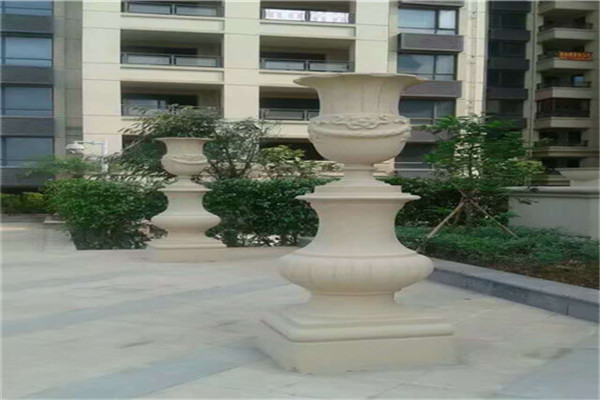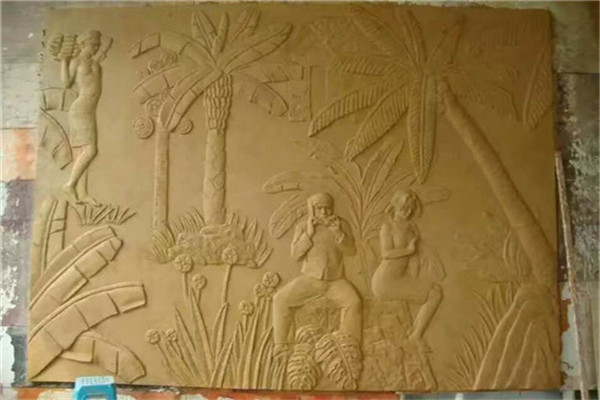Common architectural styles of GRC include European style, Mediterranean style, North American style, modern style, neoclassical style, new Chinese style, etc. In the practical application of new Chinese style buildings, the overall use of wood frame structure, or change the solid wood to concrete and wood like paint to reduce costs; Then, stone materials such as cornices, brackets, moldings, flower pots, etc. of buildings are replaced by GRC components sprayed with stone like paint, which can reduce a lot of material costs, reduce costs, and achieve design results. Hainan GRC components are applicable to the external walls of various styles of buildings. They are rich in shapes, exquisite and elegant. They provide a variety of creative choices for architectural designers. They can reflect the decorative style of buildings to a large extent, and are a new green decorative material.

Bonsai sculpture is an ingenious combination of plant cultivation technology and garden art. It is an organic unity of landscape, basin and several frames. It is mainly composed of trees and shrubs, with rocks, people, buildings, etc. as the background, to show the beautiful scenery of giant trees in the wilderness, lush forests or ancient trees with thousands of years. There are evergreen pines and cypresses, such as five needle pine, black pine, larch, juniper, etc; Flowers and fruits include camellia, brome, June snow, longevity peach, fire thorn, pomegranate, etc; Miscellaneous trees include broad-leaved trees, shrubs such as elm, skeleton, etc. The miniature bonsai, which is the size of a wine cup, is planted in a basin with a wild state, exquisite and attractive plant shape. The cursive potted landscape refers to the shape of plants into a certain word, commonly used as elm with golden leaves, rose vine, etc. The chrysanthemum potted landscape is to use the small chrysanthemums grafted on Artemisia annua to twist the artemisia stem and form a vigorous tree trunk by manual traction; Modern green sculpture three-dimensional sculpture, also known as "three-dimensional painting", can enjoy different scenery from different angles and positions. There are combinations of rattan plants and buildings, such as green bridge columns, colorful landscape walls, etc. There are sculptures of grass and flowers, such as the charmingly naive giant panda, the beautiful peacock, the elephant with a long nose, the giraffe with a raised neck, flocks of cattle and sheep, monkeys playing on horseback, etc

In the history of human civilization, ancient artists have used many experienced forms, including architecture, gardens, sculpture, painting, literature, etc., to make these humanistic environment spaces convey more abundant ideological connotation and show more strong artistic charm. The overall layout of these works is rigorous and thorough, and the scenes are grand. Various artistic means, such as architecture, gardens, music, painting, cultural relics display, film slides, torch lights, waterscape lights, are mobilized. Focusing on the common theme, each of these works gives play to its unique image language, forms a sequence space that unfolds layer by layer, and enhances rendering from visual and auditory perspectives, It influences the various senses of the viewer in an all-round way. The multi-level whole process, from sensibility to rationality, has fully expanded its breadth and constantly excavated its depth, which has led people deeply into a specific mood and mood, and then promoted them to a comprehensive and profound understanding of the event. At the same time, people have experienced a complete aesthetic process. The functional nature of the large-scale art complex with sculpture as the main body is mainly the commemorative enlightenment effect.

European style components, also known as GRC European style decorative components. GRC is the abbreviation of Glass Fiber Reinforced Cement, Chengdu Sculpture hand painting Hainan GRC component is a composite material invented and widely used abroad in the 1970s. It is a new composite material made of fast hardening Portland cement and alkali resistant glass fiber mixed with appropriate additives. It integrates light weight, high strength, high toughness, water resistance, incombustibility, sound insulation, heat insulation, and ease of processing, Sculpture hand painting manufactor Hainan EPS has a unique position in building materials. It is mainly used to make interior and exterior decoration components of European style buildings to meet the needs of European style decoration.

The types of stone inscription monuments include monuments, memorial monuments, merit monuments, temple monuments, Dianzi monuments, mausoleum monuments, etc. Except for a few wordless steles, they are generally literal steles. Usually, characters are carved on the body of the stele, and some are accompanied by carved patterns. The pedestal and cover of the stele are mostly carved with decorations, birds, animals, flowers, and mascots. The cover of the stele of the imperial family is also carved with dragons and phoenixes. Marble is the most commonly used stone for making the stele, and sandstone and granite are also commonly used. Some of the steles are huge, and some of them become a group of steles. Stone books are written with stone instead of paper, and carved instead of pen, which is very ingenious. There are many famous works of stone tablet processing and stone calligraphy carving. For example, "Xi'an Forest of Steles" includes more than 3000 historical steles from Han Dynasty to Qing Dynasty. It is the largest collection of stone books in China. Together with the "Forest of Steles in Hanlin" under construction in Kaifeng, it can be said that it is a sea of steles, and it is a collection of calligraphies of regular script, line, grass, seal script, clerical script and Wei style by famous calligraphers of all ages. In addition to large-scale carvings such as stele books and cliff carvings, there are also some stone carvings, such as mourning volumes in imperial tombs and modern fine carved small stone books, such as more than 100 mourning volumes of white marble excavated in the tomb of the prince of the Tang Dynasty, and six stone books of "Thirty six Strategies" carved in tile slate in modern Chengdu, a total of 26 pages and 1278 words, bound into a volume with eyeliner, each page is 2.2.6mm, which can be read.





